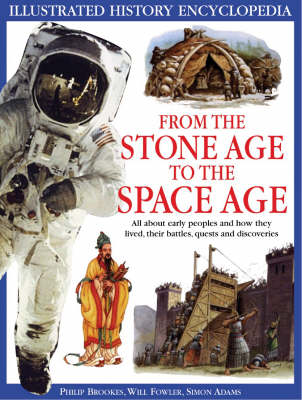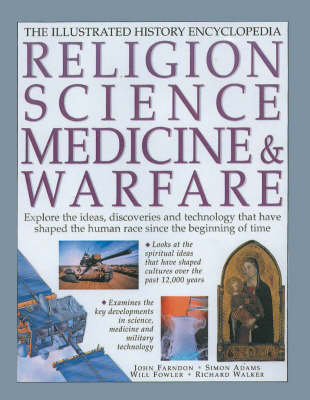Illustrated History Encyclopedia S.
3 total works
A History of Civilization
by John Farndon, Simon Adams, Will Fowler, Brian Ward, and Chris Chant
Published 15 November 2003
An exploration into the seemingly contrasting, but often inter-related, themes of science, medicine, warfare and religion in history. The text looks at the spiritual ideas that have influenced cultures over the past 12,000 years from the religion of Ancient Egypt to the Mormons. Key developments in science and medicine are analyzed from the earliest prehistoric process of skull-drilling to laboratory-grown spare body parts. The immense advances in modern military history are then described including the invention of the Shrapnel shell and the increased use of helicopters as a fighting force in the Gulf War of the 1990s. The reference traces man's battle for knowledge in all its forms and in so doing our understanding of the world. Explore the ideas, discoveries and beliefs that have shaped the human race. in a thematic approach to world history.
From the Stone Age to the Space Age
by Philip Brookes, Will Fowler, Simon Adams, and Philip Brook
Published 27 June 2003
Following developments through history, this book explores the first steps towards civilization among the prehistoric peoples. It moves on to explore the early societies of Europe, Asia, Africa and the Americas, and their history-making achievements such as the invention of writing. The spread of civilization led to increased fighting for new territory, so the book then traces the development of ancient weapons and warfare, from clubs and spears to cannons. Finally, the spotlight turns to the traders, adventurers and professional explorers who opened up new lands. Detailed paintings, inside-view artworks, photographs and maps bring history alive.
Religion, Science Medicine and Warfare
by Simon Adams, etc., John Farndon, Will Fowler, and Richard Walker
Published 31 August 2001
Throughout history, people have sought to understand the world around them and to find ways of making their lives and their work easier and more comfortable. This book brings together four key areas of human knowledge and traces the history and development of each one in turn. "World Religions" looks at how different spiritual beliefs have evolved from the Stone Age, through the mythology of ancient Greece, to major religions of the 21st century. "Science and Technology" investigates the principal trends, inventors and discoveries that have shaped the modern world. In "The Story of Medicine", you can learn about the people who revolutionized medical science and how growing knowledge of the human body, disease and hygiene led to ever more effective treatments. "Weapons and Warfare" shows hwo different types of weapon and other aspects of warfare, such as transport and communication, have developed since the 1800s, from muzzle-loading cannons to the SCUD missiles launched in the Gulf War.
Illustrated reference panels on every page focus on interesting extra details, such as medicinal plants or a mini-biography of the world's first mathematician, and include maps, quick-reference lists to key dates, cross-section artworks, fact boxes, artefacts and icons which offer detailed information on each subject area.
Illustrated reference panels on every page focus on interesting extra details, such as medicinal plants or a mini-biography of the world's first mathematician, and include maps, quick-reference lists to key dates, cross-section artworks, fact boxes, artefacts and icons which offer detailed information on each subject area.


